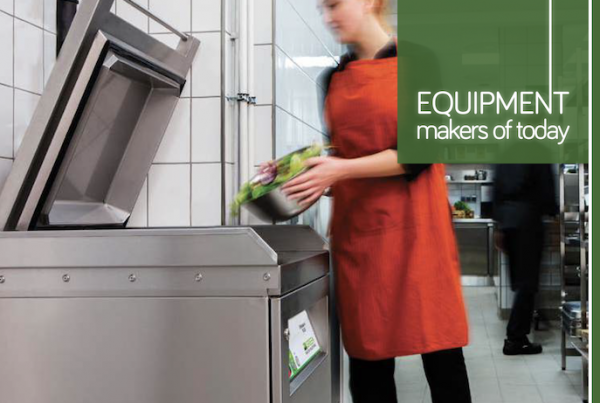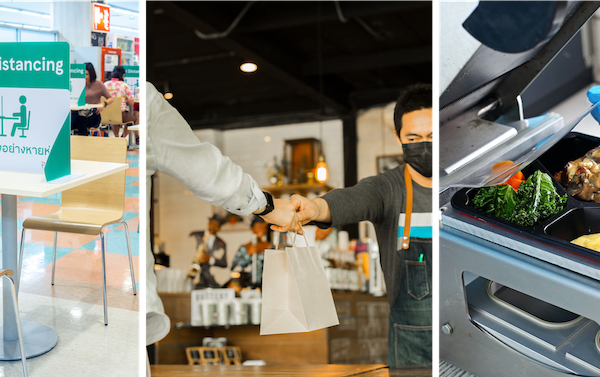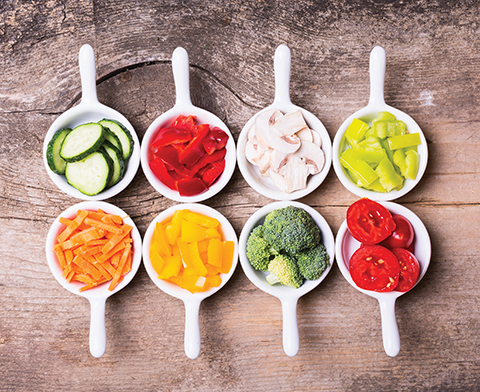
As food preparation is crucial in every kitchen, the processes of food preparation have taken changed in various forms and ways. Unlike before where you had kitchen commis peeling potatoes in sacks or onions by the barrel before service, there are now plenty of options being adopted by businesses.
Today, buying ingredients can be divided into various stages – raw (unprepared), semi-prepared and of course, prepared for cooking. Onions can be purchased peeled, and some vegetables can be bought cut and cleaned. However, this comes with the price that you would have to pay your suppliers for. In an environment where high volumes are almost always expected, this in the long term will likely eat into your profits. So, with the issue of limited and expensive manpower, how do we make this work?
In this edition of equipment focus, we are going to explore the various food preparation equipment and find out what you should consider when it comes to preparing vegetables in your kitchen.
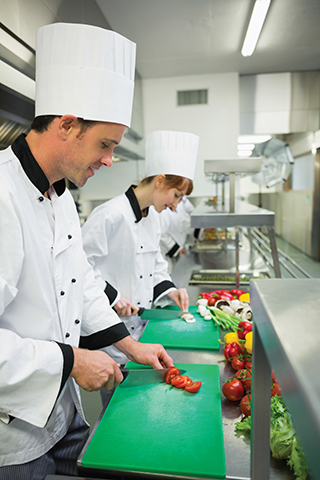 SMART VEGETABLE PREP
SMART VEGETABLE PREP
Anyone who’s anyone knows that prepping fruits and vegetables in huge quantities is time consuming, and even though many cooks enjoy exhibiting their knife work, it isn’t always a wise decision to spend time cutting by hand. Additionally, consistency is especially important in the commercial food industry, and after a member of your kitchen staff has been chopping for several hours, their steady hands may begin to fail them.
For this reason, fruit and vegetables slicers and cutters are a must in many operations. There are, however, a number of various vegetable prep tools that cut, slice and dice; so it is important to know what your needs are before weighing your options. Let’s take a look at some of the prep tools specifically intended to work with specific fruits and vegetables, and then a few multi-purpose units that can be used for a number of different foods. Some fruits and vegetables can be laborious to prepare without (or even with) a knife for one reason or another, and thus manufacturers produce some prep tools specifically for them.
Food waste is inevitable even in the best-run kitchens in the world. For every meal eaten in a restaurant, about half a kilo of food is wasted.Therefore, when purchasing a machine for your establishment, your priority lies in the reduction of food waste in your property before considering how best to dispose of unavoidable waste. Fortunately, 2016 has been seeing vegetable preparation machines that have significantly reduced food waste in the prep area down to 20 per cent. That indeed is a feat so far in the hospitality industry.
GETTING TO KNOW YOUR EQUIPMENT
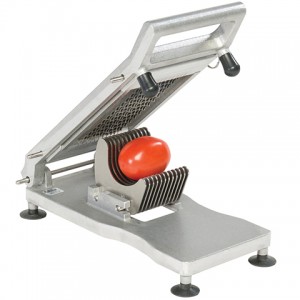 Tomato Slicers
Tomato SlicersTomatoes can be a pain to prepare with many machines, and a tomato slicer is the best way to get consistent tomato slices without destroying the tomato. Though these slicers have an incredibly sharp set of blades intended to cut through tomato skin and pulp, they can also do slice items like small citrus fruits (though citrus will definitely dull the blades faster than a tomato).
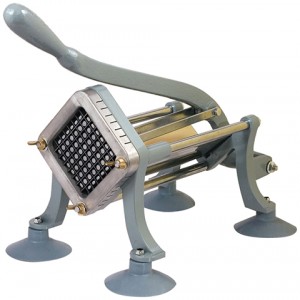 Fry Cutters
Fry CuttersFrench fries lovers want consistency in their fry size first and foremost. Fry cutters offer business owners the consistency they desire from their fried potatoes, and offer a deluge of different of cutting options, such as spiral cuts, that would other wise be difficult to by hand.
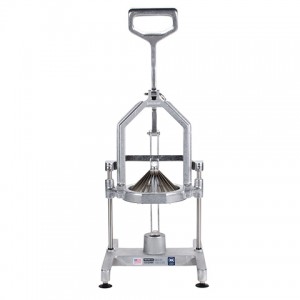 Onion Bloomers
Onion BloomersThough for standard cuts an onion can be placed into a standard vegetable chopper or slicer, there is a growing demand for the onion bloomer. These manual cutters cut and open large onions without severing the onion completely so that it can be battered, fried, and served.
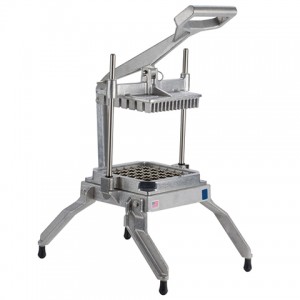 Lettuce Cutters
Lettuce CuttersHeads of lettuce are significantly larger than most other vegetables that need to be prepared; however, lettuce is one of the most common items cut in a commercial kitchen. Commercial kitchens tend to go through incredibly high volumes of lettuce, and a lettuce cutter can save prep cooks incredibly large amounts of time.

Citrus Wedgers And Apple Corers
Bars tend to use a certain big amount of citrus fruits like lemons and limes to stock their condiment stations. Bartenders also tend to have large amounts of side work, and a citrus wedger not only saves them incalculable amounts of time, but also ensures consistent cuts (something bartenders are not necessarily known for).
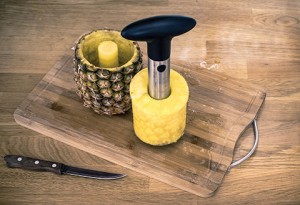 Pineapple Corers
Pineapple Corers
Pineapples require a hefty amount of prep work to get them ready for the line, and a pineapple corer / peeler takes much of that work away. After slicing the top and bottom off, these machines strip away the rind and remove the core of the pineapple, leaving only the edible part of the fruit. Though they must be sliced afterwards, these corers take a fraction of the time to remove the inedible parts of the fruit.
Then again, it is also not necessary to get a specific cutter or slicer to prepare your fruits or vegetables but it may be necessary to speed the food preparation process up even more. As kitchen technology has advanced, so has the speed at which prep cooks can prepare fruits and vegetables. There is a tremendous number of slicers and cutters in the market, some food specific cutters and choppers , continuous feed vegetable cutters that can prep a variety of different vegetables several different ways, and eve bowl cutters that can cut and blend products at the same time.
ROUTE TO CONSISTENT CUTS
Most commercial kitchens prefer an automated food processor due to its consistency and speed in preparation. The various food preparation machines range from versions like the table top, floor standing and other limited features. These features work well depending on the volume of food preparation your business handles on a daily basis.
While you can purchase separate vegetable cutting and vegetable chopping machines, it is more and more common for machines to come with different cutting discs to allow for full customizability (slicing, dicing, julienne, grate, etc.) A vegetable cutting/chopping machine can save a lot of time and effort when it comes to prepping ingredients for sandwich making, but its primary advantage is to safety. Employees with only basic training may injure themselves when cutting or chopping vegetables throughout the day, especially during busier periods. Vegetable cutting machines somewhat automate the process and largely minimise safety risks. Be sure not to use your vegetable machine to cut meat or cheese though; not only will most machines struggle to cut (and may possibly become damaged) with meat and cheese, crossover use creates a risk of bacterial contamination.
Vegetable cutters and choppers are most commonly manual-powered, but there are automated processing units. Automated machines allow you to process a great deal more vegetables per kitchen-hour than manual machines, and allow your employees to handle more kitchen tasks simultaneously and with more focus. If yours is a particularly busy kitchen, or even if the kitchen swells with excessive activity only a few times a day, it is worth considering an automated machine.
SLICING BLADES
Fruit and vegetable cutter parts are essential to maintaining your slicers, wedgers, and dicers. If you frequently use fresh ingredients at your sandwich shop, cafe, or restaurant, use these parts to keep your machine in premium condition. Choose from replacement pushers and blades designed for square cutters, shredding, and slicing.Commercial machines in the market today come with a variety of disc blades to suit your cutting needs. Here, we have a few main blades used typically in foodservice outlets. These stainless-steel discs offer greater efficiency and versatility in slicing possiblities, and a superior level of slicing for a precise cut for both hard and soft vegetables. Remember to make sure that these are 100 per cent dishwasher safe attachments and disces. Check out these quick, convenient and safe slicing and shredding assemblies that will help you slice, grate, dice, wavy-cut and julienne your produce. With optional attachments like these not only will you be able save cost on equipment, but will be able to serve your guests variety.

Grater Disc
This blade is ideal for grating cheeses, nuts, coconut and more from the standard grate of 2mm to 9mm.

Slicing Disc
Easily slice an array of vegetables, squash, and even nuts with a disc that creates a 1/32” (1 mm) slice; great for use when making salads, garnishes, ice cream toppings, and more.
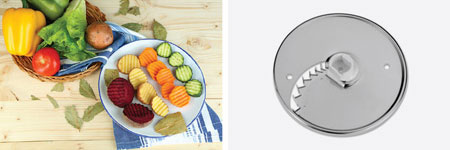
Wavy Slicer Disc
This disc is excellent for making decorative slices of celery, carrots, and more. It can also be used to make ruffle-cut potato slices.
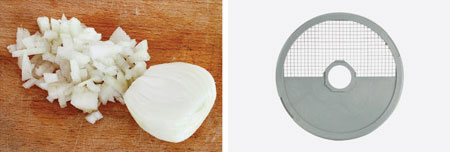
Dicing Grid
Dice 3/16” x 3/16” (5mm x 5mm) pieces of carrots, onions, potatoes and more with this dicing grid.
Blades
Tomato slicers, lettuce cutters, and citrus wedgers all require blade sets for operation. Tomato and lettuce cutters often have an option for the size of the cut they will make at the time of purchase, and replacement blade sets of varying cuts can be purchased and easily attached, as do citrus wedgers. French fry cutters are similar, however, different cutters are needed for standard or spiral cuts.
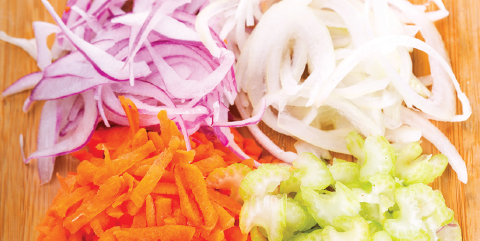
WORKING FOR TIME AND CONSISTENCY
Reduce the amount of time and labor spent on preparing fresh produce by using a vegetable cutter. These units enable users to chop, slice, wedge, peel, or portion fruits and vegetables in one swift motion or with the simple push of a button. Plus, by using a fruit cutter instead of a knife and cutting board, your foods will be more consistently sized, which will make your food presentation more professional.
HORSEPOWER
How long will the cutter be expected to run daily? And, how much produce will you want to process at each time? A good machine is able to sustain operating up to a certain amount of time without overheating. Make sure that the motor has a manufacturer’s warranty.
CUTTING BLADES
These discs should be easy to fit and clean. The general blades provided are usually for mincing, chopping, grating, slicing and dicing. Some manufacturers produce blades to be adjustable for flexibility in cutting items to a precise size. Most cutters come with the standard blades with other blades sold separately, which you can consider purchasing as and when you need them. To maintain a good cutting result, a sharp edge is required.
CONTROL PANEL
Operating a cutter only requires minimal knobs or buttons – usually a switch on/off and/or pulse function. Touch pads help prevent grime sticking on knobs while mechanical knobs are likely to react faster and are not as sensitive as electrical switches.
COLLECTING BOWL
The size of the bowl should be large enough to process suitable batches for the need in each kitchen. A too small one might result in having to repeat cycles, taking up time. Bowls are commonly made out of polycarbonate plastic or stainless steel and both material are durable, easy to clean and dishwasher safe. However, over time the plastic material will scuff and it becomes hard to see what is inside, but replacement bowls are available.
SIZE AND CAPACITY OF MACHINE
Choose the machine that can produce the capacity that you need. You want sturdy machine with a wide and heavy base because the torque of the motor is at times strong enough to cause the machine to move around or vibrate if the body of the machine is not big enough. However, if you use the cutter only at intermittent periods, it is alright to purchase a lighter and smaller one.
CUTTER LID
A secure lid is a must which goes without saying. What us probably more important is the size of the feeder. The diameter of the opening determines whether you need to pre-cut the items before inserting them into the machine. You might also want to look for tube feeders that have an additional smaller tube in the middle which helps in inserting narrow food items such as cucumber or carrots. There are different models, smaller ones that cut into a bowl and larger machines that has an outlet and can process continuously.
IN THE MARKET TODAY
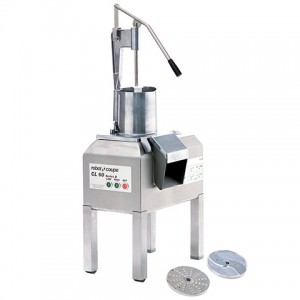 ROBOT COUPE CL60
ROBOT COUPE CL60The Robot Coupe CL60 all-in-one workstation can help prepare up to 3000 meals per service, making the unit an essential addition to any high volume foodservice operation such as hospitals, hotels, schools, and more. The unit requires a 208/240V, 3 phase electrical connection.
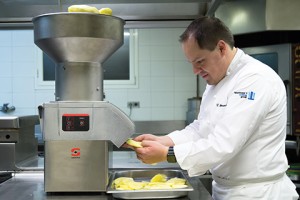 SAMMIC COMBI CK-401
SAMMIC COMBI CK-401Heavy-duty, sturdy food processor designed for commercial use. Ergonomic design, easy to use and reliable. NSFlisted. Adjustable speed. As vegetable slicer, up to 1000 rpm. Hourly output up to 650 Kg. As bowl cutter, up to 3000 rpm with up to 8 lt. bowl capacity.
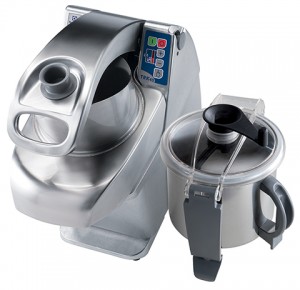 ELECTROLUX TRK55
ELECTROLUX TRK55Combined cutter/vegetable slicer, variable speed 300 to 3700 rpm. Supplied with 5,5 lt stainless steel cutter bowl and lever operated feed hopper.
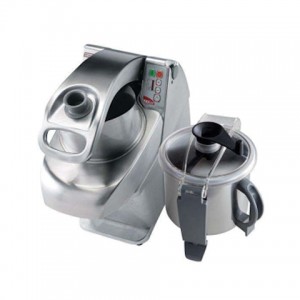 DITTOSAMA TRK45
DITTOSAMA TRK45With three functions: vegetable slicer, food processor, emulsifier, this machine is available in sizes of 4.5 L, 5.5 L and 7 L with a variable speed from 300 to 880 rpm (slicer) and up to 3, 700 rpm (cutter).
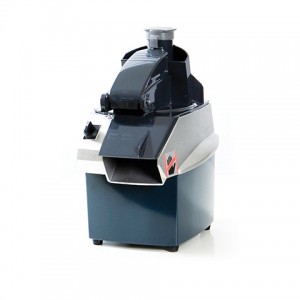 HALLDE RG-50S
HALLDE RG-50SProcesses up to 80 portions per day/ 2 kg per minute. Slices, grates, shreds, cuts julienne and crimping slices in a variety of dimensions.
An effective food rotation is essential for storing food to prepare for catastrophes, foodborne illness and controlling commercial kitchen costs. When used correctly, the firstin first-out food rotation method ensures serving safe food and eliminates spoiled food waste. FIFO refers to using the first things purchased and brought ‘in’ first so that they are also the first things “out.” When you bring in newly purchased food, put it behind or below any older containers of the same food that was already there on the shelf. If the items get mixed up, check their expiration dates. When using product for cooking, FIFO will make it naturally easier to select the older product from the front or top.







